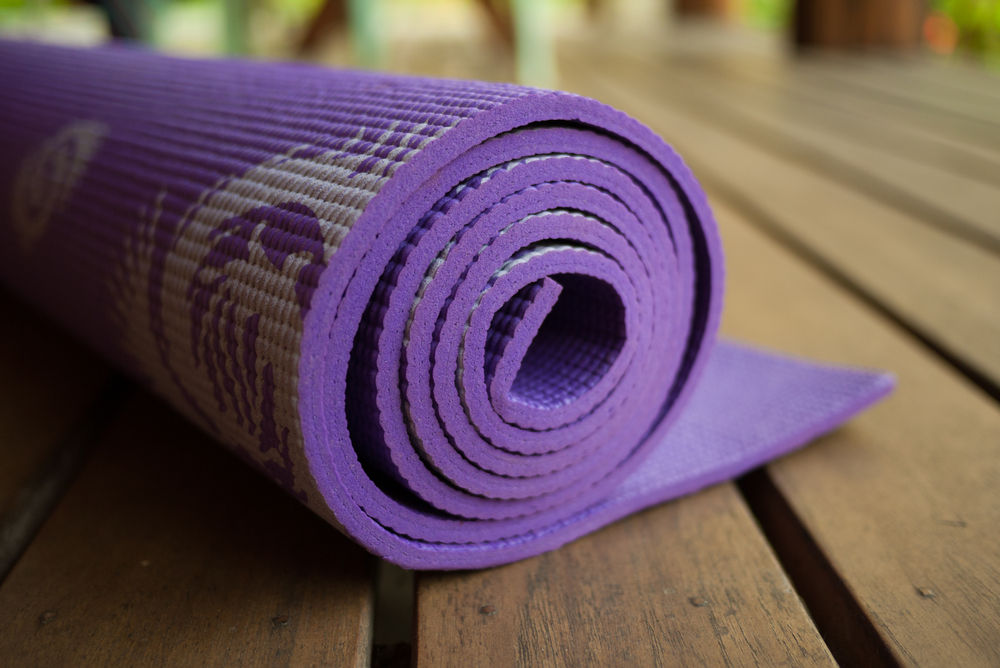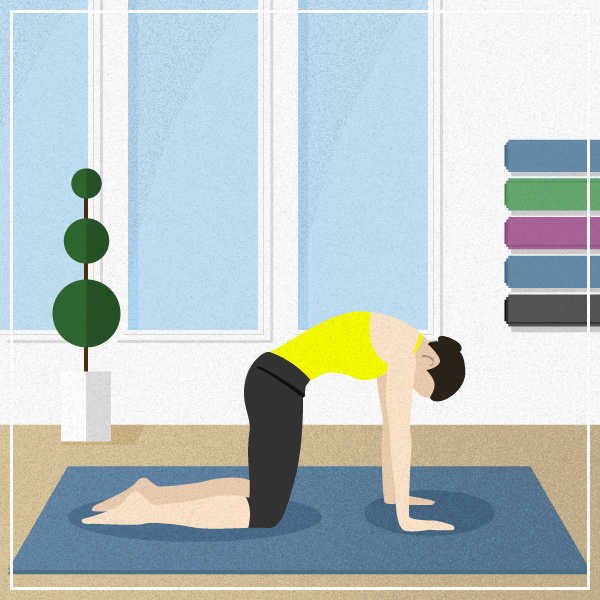
Yoga is a complementary medical practice that can be used as a possible pain treatment. During a yoga session, the yoga instructor walks his or her students through a series of poses and breathing exercises. Yoga has been known to help patients with osteoarthritis, back pain, and other musculoskeletal problems by strengthening muscles and improving flexibility for better mobility and less pain. In addition, several studies have linked exercise to a better emotional state due to the neurotransmitters released at the time. So not only could yoga reduce stress, but also it could have lasting effects on pain reduction when paired with other treatments received at Southwest Spine and Pain. While yoga focuses on the mind and whole body, there are certain poses that specifically strengthen the lower back.
 |
Chair Pose – Start with your feet close together and inhale as you raise your arms straight up over your head. Bend your knees so that your thighs almost go parallel to your yoga mat. Remember to keep your back long with your shoulders back and your chest up. You should feel this pose in your thighs but also notice a nice stretch in your lower back. As you get more advanced in your practice, try going up on your toes as you do chair pose and bring your thighs even closer to the ground. Remember to breathe! |
 |
Cat pose – Alternating between cat and cow poses can stretch back muscles and works on muscle strength. Start on your hands and knees to get into the cat position. With your hands shoulder length apart and your knees directly under your hips without tucking your toes, droop your head down and look toward your stomach for a nice stretch in the neck and upper back. At the same time, lift your back up to create an arc. Since yoga is very rhythmic and coordinates flow into the exercise, your instructor will have you inhale as you do the cat pose. You will not change your stance at all as you switch to cow pose. |
 |
Cow Pose - After inhaling as you went into cat pose, switch to cow pose on the exhale. Coming from cat pose, you will raise your head up drop your stomach down to the ground, but do not bend your elbows. This stretch is great for relieving lower back pain. When switching between cat and cow pose, it may be helpful to count your breaths so that you spend equal amounts of time stretching your back between cat and cow poses. To get the most out of these stretches, activate your core muscles! |
 |
Downward-Facing Dog – By doing downward-facing dog, sometimes called down dog, you are able to extend your back and work the muscles you use to pick things up. Starting in plank position, spread your fingers out and push back so that your hands are in front of your shoulders, your ankles are bent, and your pelvis is lifted up. Your head should be aligned with your arms and your legs should be as straight as you can make them creating a triangle. |
Most of these poses can be modified if the original stance is too difficult for beginners. Alternatively, if a pose starts to get easier, challenge yourself to do the move for longer periods of time. Breath is very important in yoga, and it is advised to either inhale or exhale as you switch poses so that the session stays rhythmic and relaxing.
If chronic pain is impacting your life, don't wait to schedule an appointment at Southwest Spine and Pain Center. With multiple locations across the state of Utah, the pain management specialists at Southwest Spine and Pain Center are dedicated to helping those who suffer from chronic pain live the life they want to! To schedule an appointment, visit our locations tab!
The advice and information contained in this article is for educational purposes only, and is not intended to replace or counter a physician’s advice or judgment. Please always consult your physician before taking any advice learned here or in any other educational medical material.
